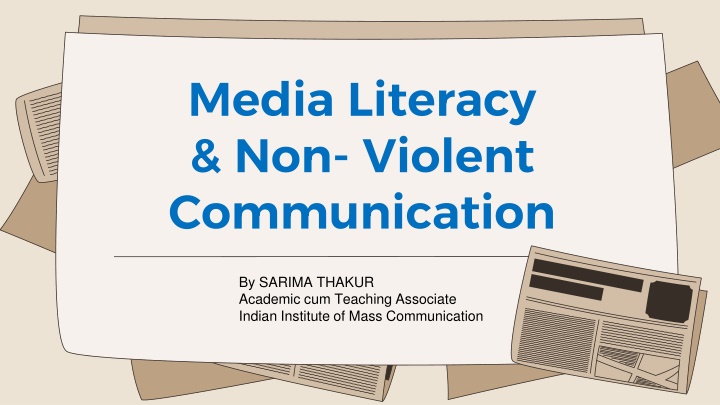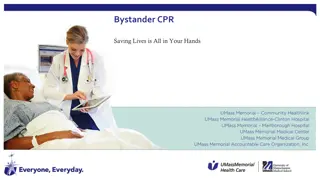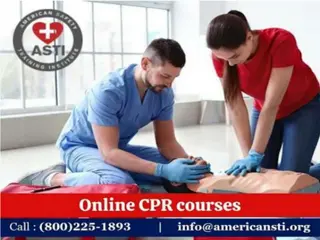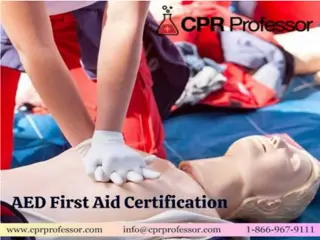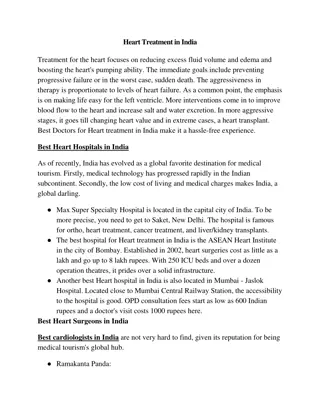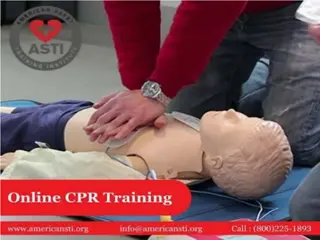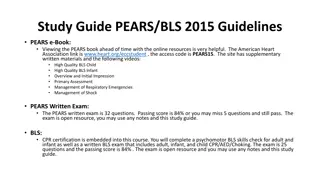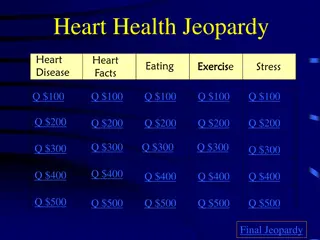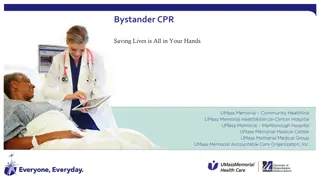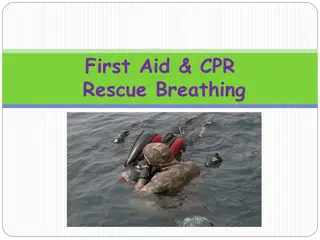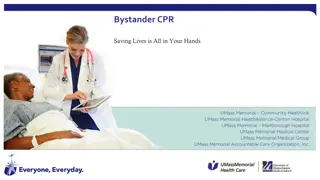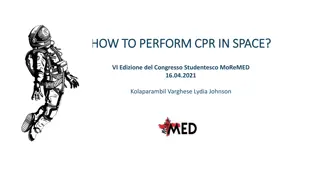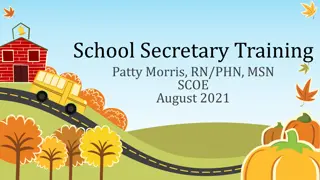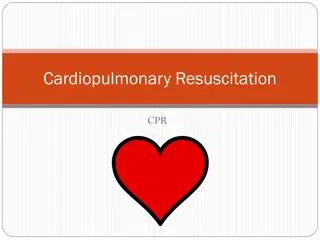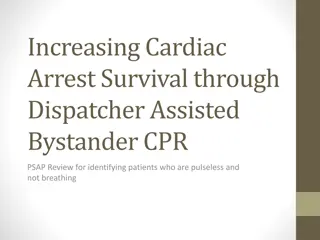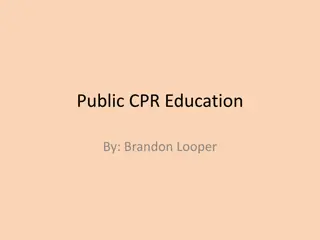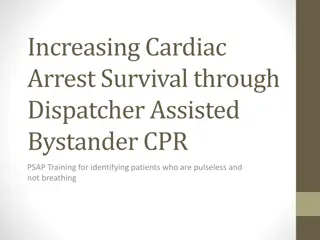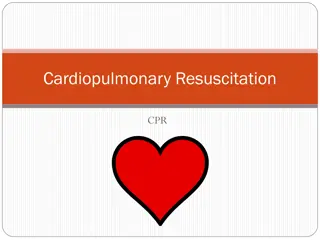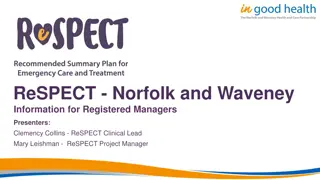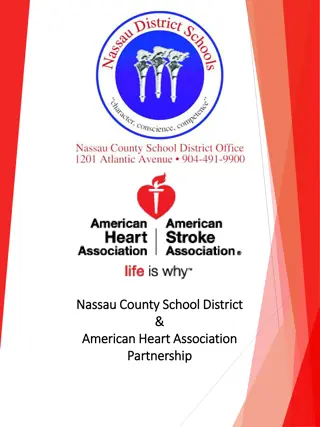CPR and Heart Health Information
Learn about CPR, cardiopulmonary resuscitation, heart health, controllable and uncontrollable risk factors, symptoms of heart attack or stroke, first aid, Minnesota's Good Samaritan Law, and the adult Chain of Survival. Understand the importance of immediate response, early CPR, defibrillation, and integrated post-cardiac arrest care. Discover the CAB technique for infants, children, and adults in emergency situations.
Download Presentation

Please find below an Image/Link to download the presentation.
The content on the website is provided AS IS for your information and personal use only. It may not be sold, licensed, or shared on other websites without obtaining consent from the author.If you encounter any issues during the download, it is possible that the publisher has removed the file from their server.
You are allowed to download the files provided on this website for personal or commercial use, subject to the condition that they are used lawfully. All files are the property of their respective owners.
The content on the website is provided AS IS for your information and personal use only. It may not be sold, licensed, or shared on other websites without obtaining consent from the author.
E N D
Presentation Transcript
Media Literacy & Non- Violent Communication By SARIMA THAKUR Academic cum Teaching Associate Indian Institute of Mass Communication
Understanding Media https://thoughtfullearning.com/inquireHSbook/pg246
How Media Works: Cultivation Theory: It is social scientific theory that explains the long-term effects of media on people who are exposed to it for long periods.
Examples: Crime Perception and Media Exposure Gender Roles in Indian Soap Operas Social Media and Youth Behavior Perception of Rural Life Through Media
Media and Information Literacy Media literacy refers to the ability to access, analyze, evaluate, and create media in a variety of forms. It is crucial for understanding messages we receive from television, radio, the internet, newspapers, and other media outlets. A person who is media literate can discern between a factual news report and a misleading article the complex
Importance of Media and information Literacy Critical Thinking: Media literacy encourages individuals to critically analyze the information presented to them, helping to distinguish between facts, opinions, and propaganda. Example: When watching a news segment, a media-literate person may notice subtle bias in the language used to describe different political figures. https://www.apple.com/in/newsroom/2019/03/apple-teams-with-media-literacy-programs-in-the-us- and-europe/
Informed Citizens: Being media literate enables individuals to make better decisions, particularly in a democratic society where media plays a significant role in shaping public opinion. Example: Voters who are media literate can better assess the credibility of political advertisements and campaign promises.
Empowerment: Media literacy empowers people by giving them the tools to create their own media content, offering alternative perspectives and challenging dominant narratives. Social media platforms allow individuals to share their stories, often providing a voice to marginalized communities. Example: The #MeToo movement is an example of how media literacy and social media empowered individuals to speak out against sexual harassment and assault, leading to significant social change.
Understanding Non-Violent Communication COMMUNICATION helps mould our realities, our perspectives and emotions. It makes us to feel more connected to each other. Our communication is a reflection of the inner workings of our mind. Everything we communicate originates from the contents of our mind https://www.timesnownews.com/the-buzz/article/international-day-of-non-violence-10-quotes-of- mahatma-gandhi-on-non-violence/661146
Challenges to Communicators today Increase in hate speech and hate narratives Polarizing & divisive communication Frozen communication at all levels So the challenge is on how to promote heart-to-heart communication, counternarratives to hate speech How communication can be a source of positive values and mutual co-existence.
Non-Violent Communication NVC is a communication process developed by Marshall Rosenberg that focuses on expressing oneself honestly and empathetically while listening to judgment or criticism. others without https://blog.proactioninternational.com/en/nonviolent-communication-best-practices-at-work
Nonviolent communication is a holistic communication approach which underlines the significance of human interconnectedness. It encompasses our intrapersonal communication, communication with others, communication in the society at large, communication with nature and communication with other living beings. Its premise is that in the event of a dysfunctional communication whether it is a destructive self-communication, interactions with others, in the society, with nature or with other living beings, there would be disruptions in our relationships. As a holistic communication approach, it contributes to our cognitive, emotional and moral development
Factors affecting Non- Violent communication Half-truths or misleading information Hate speech More violent content in Media Commercial Interests Sensationalism
Four Components of Non-Violent Communication
Five Pillars of Mahatma Gandhis Nonviolence Respect: Respect involves recognizing the inherent dignity and worth of every individual, regardless of differences in beliefs, culture, or social status. Gandhi believed that nonviolence starts with respecting others' humanity, which means treating others with kindness and consideration, even in disagreement or conflict. https://kidshelpline.com.au/teens/issues/all-about-respect
Understanding: Understanding requires actively listening to others and seeking to comprehend their perspectives, needs, and emotions. In Gandhian nonviolence, understanding others' viewpoints is crucial to resolving conflicts and building meaningful connections that transcend violence. http://www.stuartduncan.name/general/understanding-and-acceptance-means-listening-even-if-you-disagree/
Acceptance: Acceptance means embracing others as they are, without trying to change or judge them. Gandhi emphasized differences and working towards common ground. This pillar encourages tolerance and the acknowledgment that diversity in thought and action is natural and valuable. the importance of accepting https://www.linkedin.com/pulse/social-acceptance-parallel-story-prasanna-m-sridhara/
Appreciation: Appreciation goes beyond mere acceptance; it involves valuing the contributions and existence of others. Gandhi s nonviolence teaches that by appreciating the positive aspects of people and situations, we can foster a more harmonious and supportive community. https://www.inspirus.com/blog/20-examples-of-employee-appreciation-day-messages-for-2024/
Compassion: Compassion is the deep, empathetic concern for the suffering and well- being of others. It is the driving force behind Gandhi s nonviolent actions. Compassionate behavior includes acts of kindness, empathy, and a genuine desire to alleviate others' pain and hardship, which is at the heart of nonviolence. https://www.csustan.edu/tag/self-compassion
Principles of NVC Observing a situation or behavior without attaching any judgments, evaluations, or labels. Clearly expressing your feelings in response to what you observe, without blaming others for how you feel. Recognizing and stating the underlying needs or values that are connected to your feelings. Asking for what you want in a clear and specific way, without making demands
Listening to others with empathy, trying to understand their feelings and needs without judgment or interruption. Being honest and transparent in expressing your feelings, needs, and requests, while maintaining respect for others. Prioritizing the connection and understanding between individuals rather than winning an argument or proving a point. Encouraging cooperation rather than trying to control or manipulate others through guilt, fear, or rewards. Showing compassion towards others and yourself, understanding that everyone has needs and makes mistakes.
Media literacy & Non- Violent communication Promoting Empathy: Media literacy helps individuals understand and respect diverse perspectives, which is crucial for empathy a core component of NVC. A media-literate person who watches news from multiple sources can better understand the perspectives of people from different backgrounds. Example: News coverage of global crises, like the Syrian refugee situation, can inspire empathy when presented through personal stories and human experiences.
Reducing Conflict: Both media literacy and NVC work together to reduce conflicts by promoting understanding dialogue. Online discussions about sensitive topics often escalate, but applying NVC can help de-escalate tensions by focusing on feelings and needs rather than accusations. and constructive "Communication is the most important skill in life." Stephen Covey
Empowering Voices: Media literacy enables marginalized communities to create and share their narratives, communications are respectful and heard. while NVC ensures these Grassroots underrepresented groups in a way that is constructive and heard by a broader audience. media projects that give voice to Example: Indigenous media platforms using NVC to engage with audiences on cultural preservation and rights issues.
